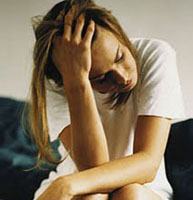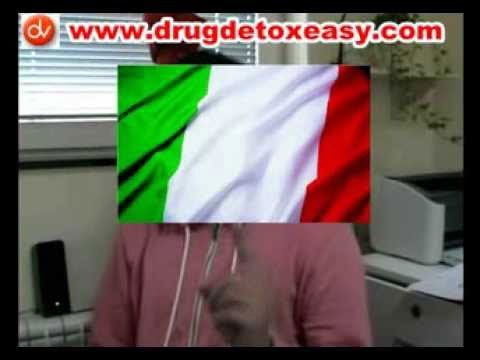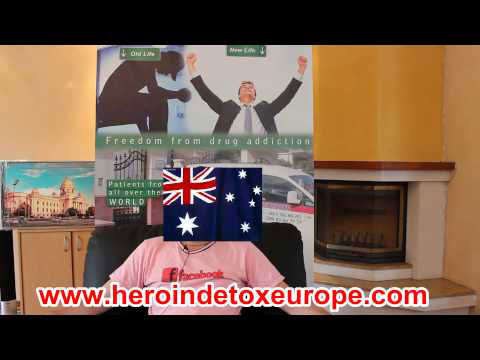Opiate withdrawal syndrome and symptoms
Opioid withdrawal syndrome
Opiate withdrawal is a phrase that refers to a wide range of opioid addiction symptoms that occur after or complete cessation or drastic reduction in the amount of opiates that were consumed for a longer period of time (opiate addiction). Opiates include: heroin, morphine, codeine, oxycotin, methadone, tramadol, opium. Also, there are the drugs of the benzodiazepine group that are used in extremely large quantities, and the most famous is certainly bensedin. In addition to these substances, alcohol is definitely an opiate, and what all these substances have in common is creating a strong physical and psychological dependence.
 The essence of taking illegal opiates such as heroin or illegal oxytocin, a drug which doctors prescribe, but which for some reason is abused, is the same. The first is the desire to experience some initial psychological and physical sensations and then along comes the desire to extend these effects at all costs and prevent the symptoms of abstinence syndrome - the crisis.
The essence of taking illegal opiates such as heroin or illegal oxytocin, a drug which doctors prescribe, but which for some reason is abused, is the same. The first is the desire to experience some initial psychological and physical sensations and then along comes the desire to extend these effects at all costs and prevent the symptoms of abstinence syndrome - the crisis.
So, opiates cause dependence, which worsens over time and increases as the body slowly but surely develops a kind of immunity and tolerance to certain amounts of opiates and for achieving the same effects a user needs to increase the dose. Even mixing and combining various opiates, or opiates and alcohol leads to a more severe state of dependence and chronic health problems in the body.
At the same time as the physical, a psychological dependence develops and drug addicts because they see source of their "luck" and satisfaction in substance they take and do not see anything further. So any thought lack or loss of opiates causes’ severe panic attacks and fear because without drugs they don’t see the meaning of life. One cannot imagine life without it, and the memory of life before addiction is completely erased. Only one thing remains - drugs and incredible craving for it. To achieve the proper "pleasure", but at the same time and prevent coping with the consequences when it’s not used. This is a terrible vicious circle from which is very difficult to emerge without professional help and support of family and the environment. It’s dangerous and often fatal for many.
When the user stops taking opiates for any reason, the consequences of termination for all patients is the same - there is a opiate withdrawal syndrome because the body needs time to cleanse traces of opiates and restore some natural abilities that were blocked by the consumption of opiates. Length and severity of the abstinence syndrome varies from case to case, depending on the kind of opiate that was abused, the amount, time period of consumption ... so that every patient that wants’ to stop his addiction is a different story, although in essence all the same - they must pass the initial phase of detoxification and cleansing of the body to be able to start the necessary psychotherapy. Because opiates, as we have said, create physical and psychological dependence and detoxification of the body alone is not enough to say that the patient is completely cured. On the contrary, most often the case is that treatment begins after opiate detoxification.
Opiate withdrawal syndrome symptoms
It is paradoxical to say, but painfully true, that the opioid withdrawal syndrome symptoms, although heavy and serious, are the easier part of the
 treatment. Not only because the average body cleanse from toxins in a a week, depending on opiates, but because the biggest enemy of drug addicts is their mind. Psyche. The internal struggle with the idea that life is impossible without drugs, It’s the only meaning and that without it there's no point living. Consequently there is a saying that very well reflects this problem: "What could be more powerful than heroin? The answer is - a craving for heroin. "
treatment. Not only because the average body cleanse from toxins in a a week, depending on opiates, but because the biggest enemy of drug addicts is their mind. Psyche. The internal struggle with the idea that life is impossible without drugs, It’s the only meaning and that without it there's no point living. Consequently there is a saying that very well reflects this problem: "What could be more powerful than heroin? The answer is - a craving for heroin. "
Opioid withdrawal syndrome symptoms are: nervousness, anxiety, pains in muscles and bones, vomiting, insomnia, sweating, hot and cold sensations in the body, runny nose, stomach cramps, diarrhea. The first withdrawal symptoms begin approximately 12 h after the last intake of opiates when there is a craving for the drug and mental tension because there is none. After 24 hours the symptoms are intensified and become more visible and more painful because trembling and sweating and muscle aches start and this phase lasts for some 72 hours after the last intake of opiates. Then the most symptoms start - the most painful and the most unpleasant, such are vomiting, diarrhea, panic attack and the trembles of the whole body.
In the process of treating a person suffering from addiction, appropriate Medication is used prescribed and administered exclusively by doctors to bridge this difficult period and enter the next phase, which involves working with the patient to re-socialize and psychologically heal. People are usually very late to contact for help because they do not want to face that they have a problem, or because of a family, and social stigma. Because of that the treatment of these diseases is very difficult and time-consuming and gives real results only in appropriate professional clinics that specialize in the treatment and work with such patients. In such isolated conditions with professional physical teams and medical staff, patients can get the right treatment, tailored to their individual condition, and the right care, which will help them to not feel endangered.
Bookmark & Share




































